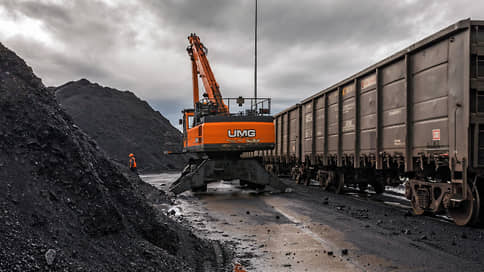Export of Russian coal slows down in summer amid reduction of discounts for it
[ad_1]

The export of Russian coal in the summer is slowing down against the backdrop of a reduction in discounts for it. The narrowing of discounts in May-June led to the fact that the average prices for thermal coal shipped from the eastern ports of the Russian Federation turned out to be higher than for Australian coal. According to Platts, buyers, including India and South Korea, are beginning to look for cheaper alternatives in these conditions. According to experts, the convergence of prices of various exporters after the price rally in 2022 was expected, and the reduction in exports from the Russian Federation is rather a temporary phenomenon.
Russian coal has lost its price advantage in export markets, which has led to a slowdown in exports. Between May and June, the average price of 6,000 kcal thermal coal eastbound was $104.8 per tonne, while 5,500 kcal Australian low-ash coal was $97.75 per tonne, according to Platts. Against this background, the export of Russian coal slightly decreased relative to the maximum monthly values at the beginning of the year (see chart).
In 2022, discounts on Russian coal helped to keep production and exports against the background of the European embargo. Production increased slightly, to 443.6 million tons, while coal exports decreased by 7.5%, to 210.9 million tons. According to Platts, in the first half of 2023, Russian coal exports grew by 7.4% year-on-year, to 100.1 million tons. However, in the period from May to July, exports fell in annual terms by 8.7%, to 49.5 million tons. In contrast, coal exports from Australia increased by 10% in the period from May to July, to 97 million tons. Australian companies are regaining market share by lowering prices and resuming coal trade with China after an unofficial ban is lifted.
Market participants, writes Platts, believe that these are early signs of weakening Russian exports, which will continue in the second half of 2023, which will lead to the fact that annual coal sales will remain below 2022 levels. Buyers will look to cheaper alternatives. In addition, the overall demand for coal in the market is declining.
In 2022, of the non-European buyers of Russian coal, only Japan reduced purchases, thereby excluding itself from the list of top five coal importers from Russia, which now includes China, India, South Korea, Turkey and Taiwan. Between May and July, India’s imports of Russian coal fell to 5.6 million tons from 6.1 million tons a year ago, while South Korea’s imports fell by 16.22% to 6.2 million tons. Taiwan slightly increased purchases to 2.3 million tons. At the same time, China and Turkey increased imports of Russian coal — by 17%, to 22.2 million tons, and by 10%, to 6.2 million tons in May-July 2023, writes Platts.
The decline in coal exports from Russia is more temporary than systemic, comments Boris Krasnozhenov from Alfa-Bank. “Demand from China and Southeast Asia continues to grow. Deliveries from South Africa have certain logistical restrictions. Prices for thermal coal in the main export destinations bottomed in June-July and may show positive dynamics in the autumn,” he says.
The reduction of discounts and premiums between coals of different origin takes place against the backdrop of a general decline in coal prices and is a natural process as export netbacks approach the cost, says Evgeny Grachev, director of the Center for Price Indices at Gazprombank. The sharp increase in domestic production by importing countries, which, for example, in China grew by 107 million tons in the first half of the year, led to increased competition. As a result, Mr. Grachev says, those suppliers who previously offered a premium are forced to lower their prices, while those who gave part of the margin for entering the market have lost this opportunity. According to the expert, the situation with internal logistics only complicates the position of exporters, including Russian coal producers. Lack of locomotive traction, exacerbated by the holiday season, as well as repair work on the railway lead to a slowdown in the turnover of wagons and maintaining wagon rates at a high level, he adds.
[ad_2]
Source link





